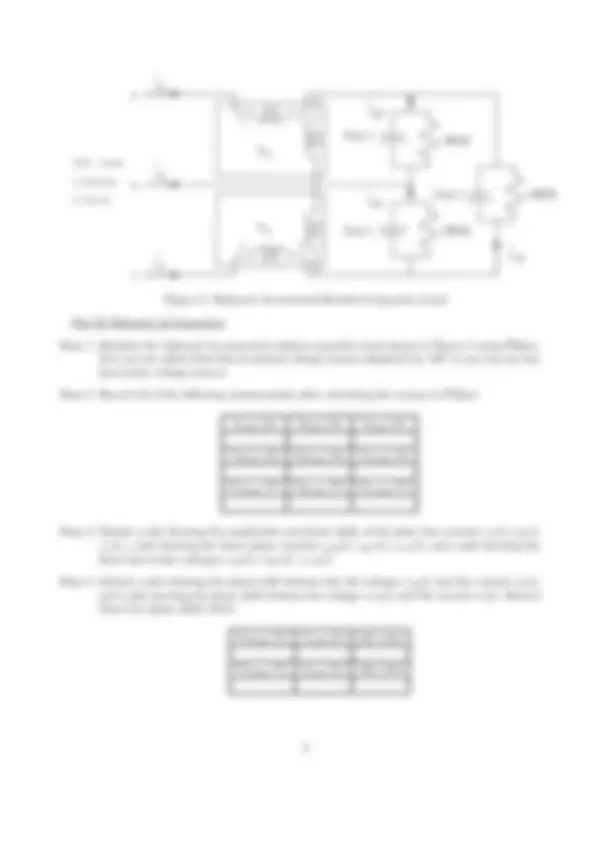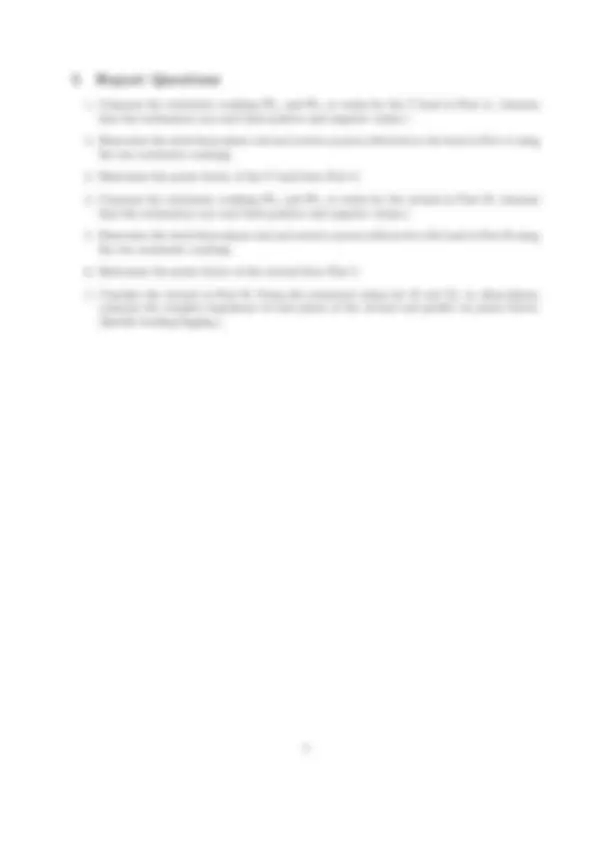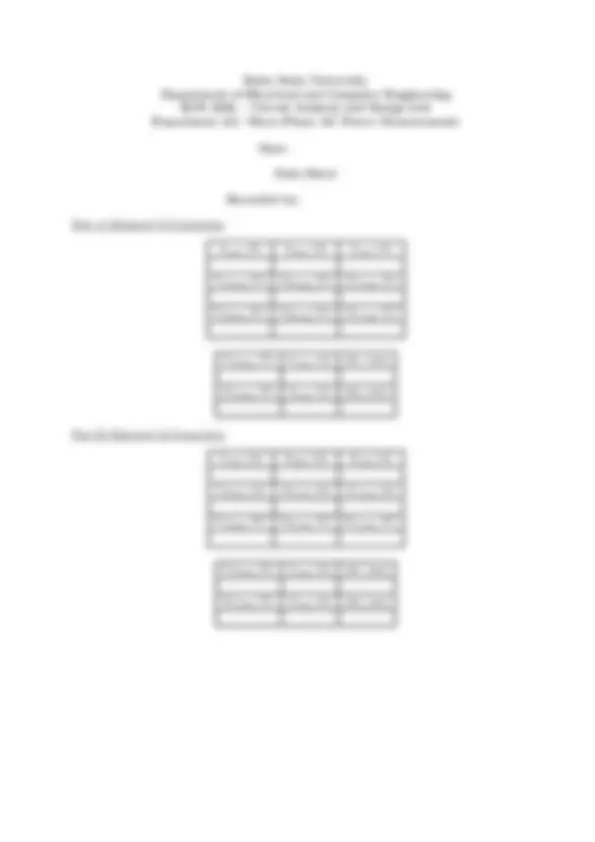





Study with the several resources on Docsity

Earn points by helping other students or get them with a premium plan


Prepare for your exams
Study with the several resources on Docsity

Earn points to download
Earn points by helping other students or get them with a premium plan
Community
Ask the community for help and clear up your study doubts
Discover the best universities in your country according to Docsity users
Free resources
Download our free guides on studying techniques, anxiety management strategies, and thesis advice from Docsity tutors
Material Type: Lab; Class: Circuit Analysis and Design; Subject: Electrical & Computer Engineer; University: Boise State University; Term: Unknown 1989;
Typology: Lab Reports
1 / 5

This page cannot be seen from the preview
Don't miss anything!




Boise State University Department of Electrical and Computer Engineering ECE225L – Circuit Analysis and Design Lab
Experiment #5: Three-Phase AC Power Measurements
The objectives of this laboratory experiment are:
We are all familiar with single-phase AC circuits, particularly for domestic uses. The number of phases encountered in a power circuit should not be confused with the number of different voltages available from the source. For example, domestic 120/240-volt sources are only one phase since they are usually obtained from one phase of a three-phase electric power distribution network. Three-phase power circuits are predominant in commercial and industrial uses, mostly for eco- nomic reasons although the very existence of three-phase circuits can be attributed to their ease of creation by a three-phase AC generator. In terms of output power, a polyphase circuit is somewhat like a multicylinder internal combustion engine. The power in all cylinders is summed to obtain the total shaft power but the construction is such that each cylinder is important because the power portion of the engine stroke does not occur at the same time in each cylinder.
The total real and reactive power delivered to or consumed by a load is the algebraic sum of that consumed by each element regardless of the type of connection (Y or ∆). Three-phase real and reactive power consumption may be measured in many ways. This experiment uses the classical two-wattmeter method for the total three-phase real power. A wattmeter is essentially a stationary ammeter coil (current coil) coupled with a movable voltmeter coil (potential coil) in series with a very large resistance. The average value of the torque produced between the two coils is calibrated to read the average power in watts on the deflection scale.
The wattmeter, when placed between a source and a load, reads the following wattage:
W = | V˜ || I˜| cos(^6 V˜ − 6 I˜) (1)
where | V˜ | is the rms magnitude of the voltage across the potential coil, | I˜| is the rms magnitude of the current through the current coil, and (^6 V˜ − 6 I˜) is the phase shift between the voltage across the potential coil and the current through the current coil.
208 Vrms
3−wire
3−Phase
Figure 1: Balanced Y-connected Resistive Load
Part A: Balanced Y-Connection
Step 1: Simulate the balanced Y-connected resistive load shown in Figure 1 using PSpice. You can use either three line-to-neutral voltage sources displaced by 120o^ or you can use two line-to- line voltage sources. In this latter case, there is no need for a third line-to-line voltage source. (Why?)
Step 2: Record the following measurements after activating the pair of cursors in PSpice:
IA,pp (A) IB,pp (A) IC,pp (A)
VAN,pp (V) VBN,pp (V) VCN,pp (V)
VAB,pp (V) VBC,pp (V) VCA,pp (V)
Step 3: Submit a plot showing the amplitudes and phase shifts of the three line currents iA(t), iB (t), iC (t), a plot showing the three line-to-neutral voltages vAN (t), vBN (t), vCN (t), and a plot showing the three line-to-line voltages vAB (t), vBC (t), vCA(t).
Step 4: Submit a plot showing the phase shift between the the voltage vAB (t) and the current iA(t), and a plot showing the phase shift between the voltage vCB (t) and the current iC (t). Record these two phase shifts below:
VAB,pp (V) IA,pp (A) ∆t 1 (ms)
VCB,pp (V) IC,pp (A) ∆t 2 (ms)
Boise State University Department of Electrical and Computer Engineering ECE 225L – Circuit Analysis and Design Lab Experiment #5: Three-Phase AC Power Measurements
Date:
Data Sheet
Recorded by:
Part A: Balanced Y-Connection
IA,pp (A) IB,pp (A) IC,pp (A)
VAN,pp (V) VBN,pp (V) VCN,pp (V)
VAB,pp (V) VBC,pp (V) VCA,pp (V)
VAB,pp (V) IA,pp (A) ∆t 1 (ms)
VCB,pp (V) IC,pp (A) ∆t 2 (ms)
Part B: Balanced ∆-Connection
IA,pp (A) IB,pp (A) IC,pp (A)
IAB,pp (A) IBC,pp (A) ICA,pp (A)
VAB,pp (V) VBC,pp (V) VCA,pp (V)
VAB,pp (V) IA,pp (A) ∆t 1 (ms)
VCB,pp (V) IC,pp (A) ∆t 2 (ms)